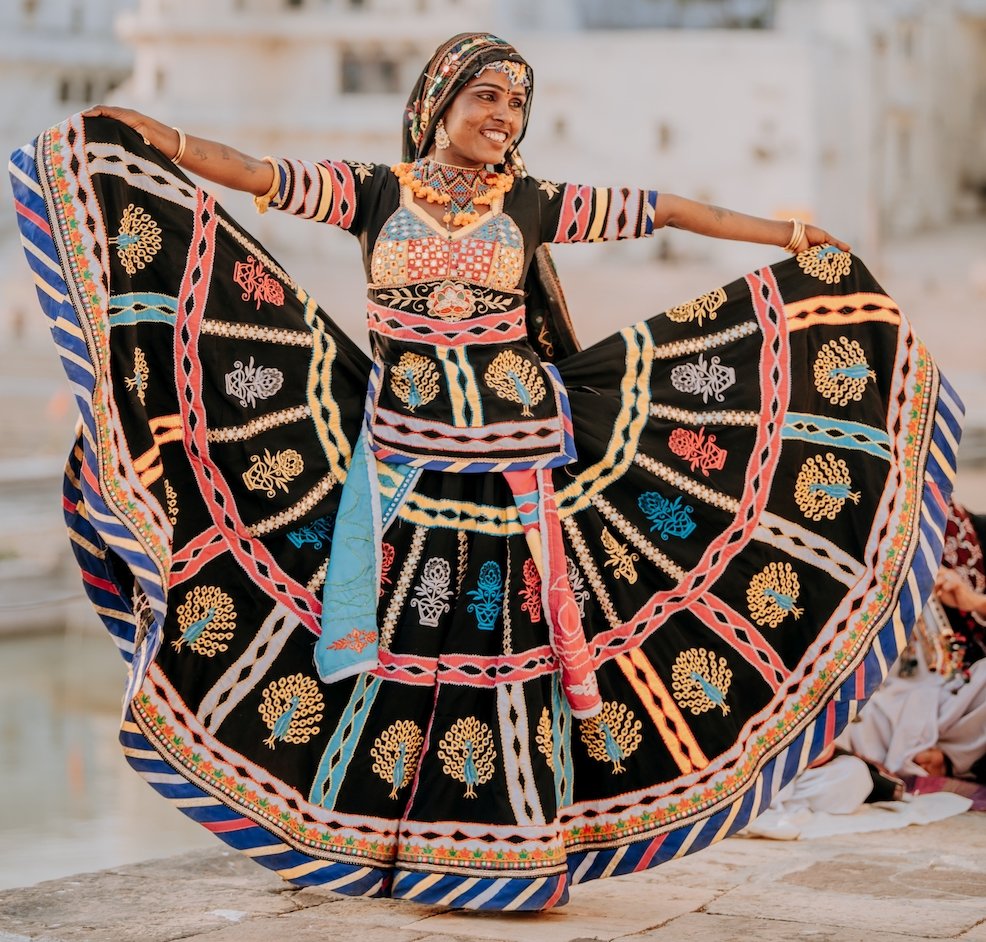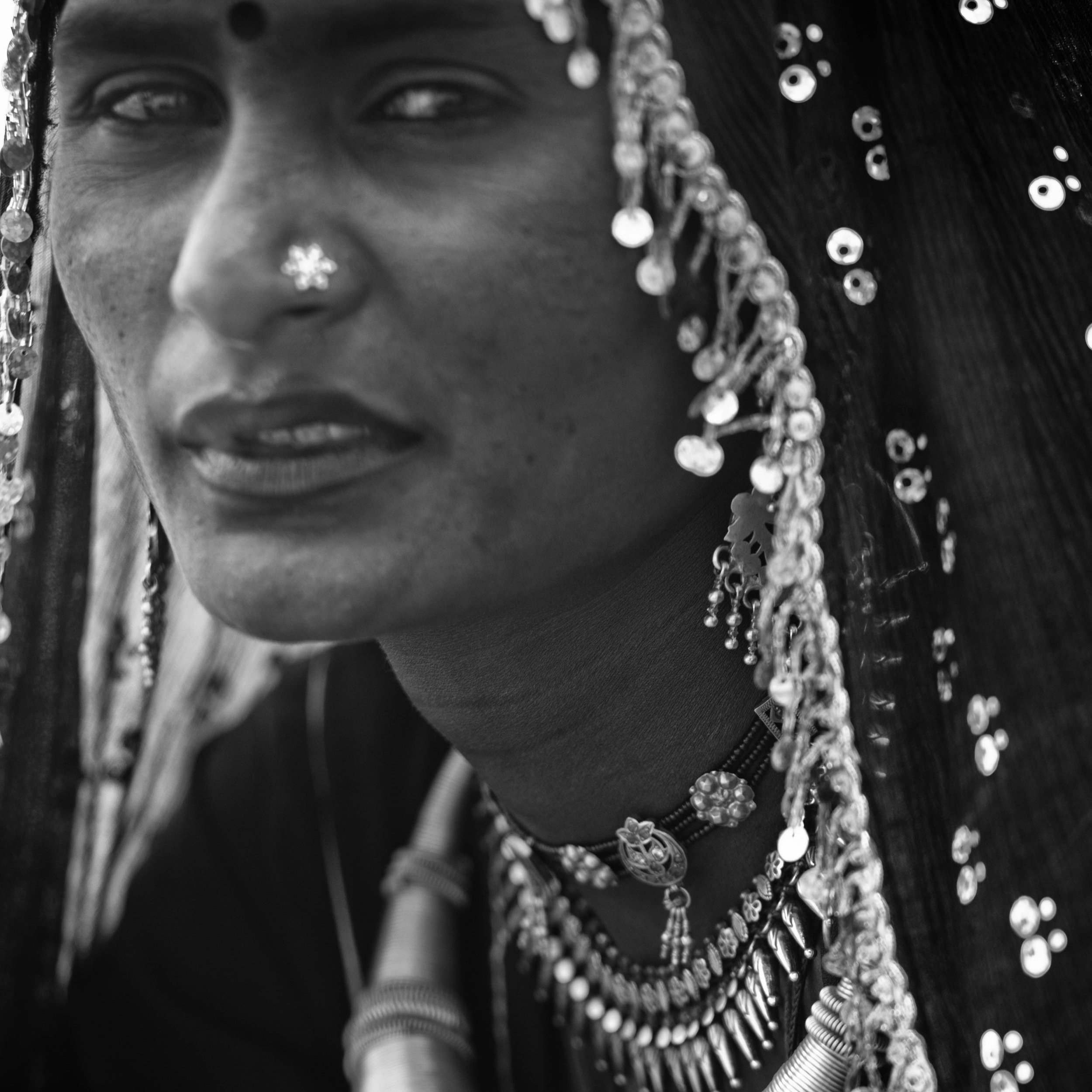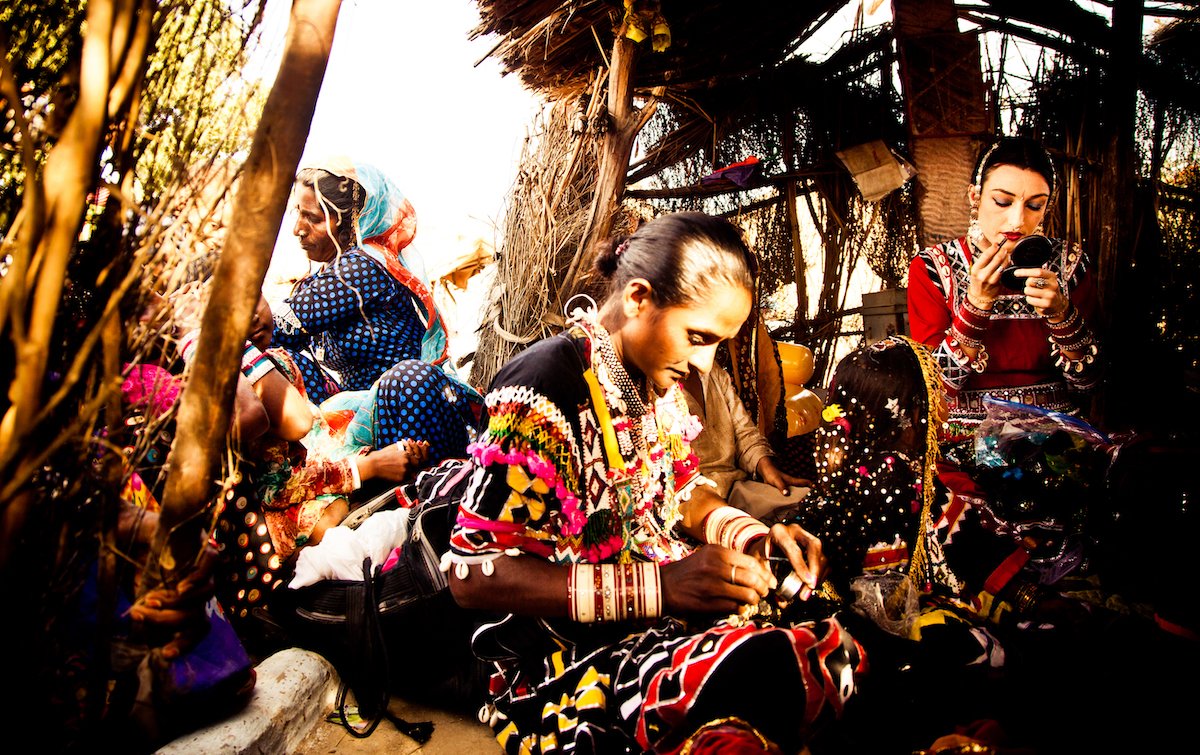Kalbeliya Adornment
Dancers shown here: Raki Kalbeliya , Asha Sapera & Nathuri Sapera
Introducing the Kalbeliya…
Most of my 20’s were spent laughing around cooking fires, playing with dusty desert children and applying kajal on bumpy jeep rides through the desert on my way to perform with the Kalbeliya of Rajasthan. I have been deeply involved within this community of dancers and musicians for more than two decades now, with bonds that span several generations.
Kalbeliya are the colorful face of Rajasthan’s thriving tourism industry. Absolutely bold personalities shine through their stage costumes and wild cacophonous music - offering spectators a chance to live for just a moment in the animated realm of a society still very much functioning as a tribe.
It used to be that the Kalbeliya were only seen dressed in rags wandering door to door begging and singing ballads and bajans, Kalbeliya is the name of a caste of people mainly settled in Rajasthan, North India - a desert region of camel culture and palaces. Their name translates to: kal: time, black, death and beliya: the people of - essentially “the people of death and darkness”. Clearly the name recalls their position as feared outsiders of the social structures around them. Within their community they call themselves Jogi - meaning Yogi or one who follows the teachings of Gorak Nath and the esoteric, often Left handed Nath traditions which many sadhu’s of India still follow today. The fascinating details of their spiritual legacy we will save for another time…
I entered the world of the Kalbeliya as a young dancer/researcher first with communities in Jodhpur, then in Pushkar where I decided to settle and establish a dance school in 2003. The Kalbeliya women’s songs, the details of their semi-nomadic way of life, their adornment and the strong look in their eyes captivated me. While hardly having any possessions to speak of, the women dress like queens, dripping with silver jewelry and colorful bangles.
While the Kalbeliya dance itself is not a technically complex, the presentation rests mainly on the effect that the costume and ornaments have on the viewer when the dancer flutters, and flows to the simple rhythm. If you saw this dance with out the silhouette and detail of the costume, it would not look like much. Like a peacock (which dot the landscape from where the Kalbeliya come) the dance is completely reliant on the ornamentation of the costume. In fact the dancer often emulates ‘the dance of the peacock’ by lifting their skirt at the hem and moving on promenade to show the color and details of their highly detailed skirt.
Dancers hand make the beaded jewelry and bead tassels / trims that line their costumes lending extra eye-catching more movement to the fabric. Literally weighing kilos because of all the beadwork and sequence appliqué, the Kalbeliya costume consists of a long gāgra (skirt) and kurta (long tunic) with heavy embroidery and ribbons of color, ghungaroo (ankle bells to keep the rhythm and help weigh the feet to the earth while executing fast spins), odni /chunni (veil worn over the head).
It is felt each and every limb should be heavily adorned with jewelry and tassels including: jūmki (large chandelier earrings with a long strap to anchor in the hair to support the weight of the earrings), nath (nose pin), chūdi (bangles), contala (long necklace of beads that also has dried cloves to give a fragrant odor when the dancer sweats), chugga (short chokar necklace), baju band (tassels hanging from the upper arms) to mention a few.
In Rajasthan they say that the colorful dress and ornaments of the people, make up for the sparseness of the land.
I have so many stories to share from my time with Kalbeliya friends and community that have taught me about adornment and its utility far beyond fashion. My deep passion for traditional cultures, dance performance practices and silver jewelry of tribal and rural peoples of Rajasthan have been nurtured by the years spent in performance spaces with the Kalbeliya. I look forward to sharing more stories with you here!
Colleena Shakti preparing for a dance performance with Nathuri Sapera, one of her first Kalbeliya friends and teachers.
Photo by: Devansh Jhaveri, 2012






